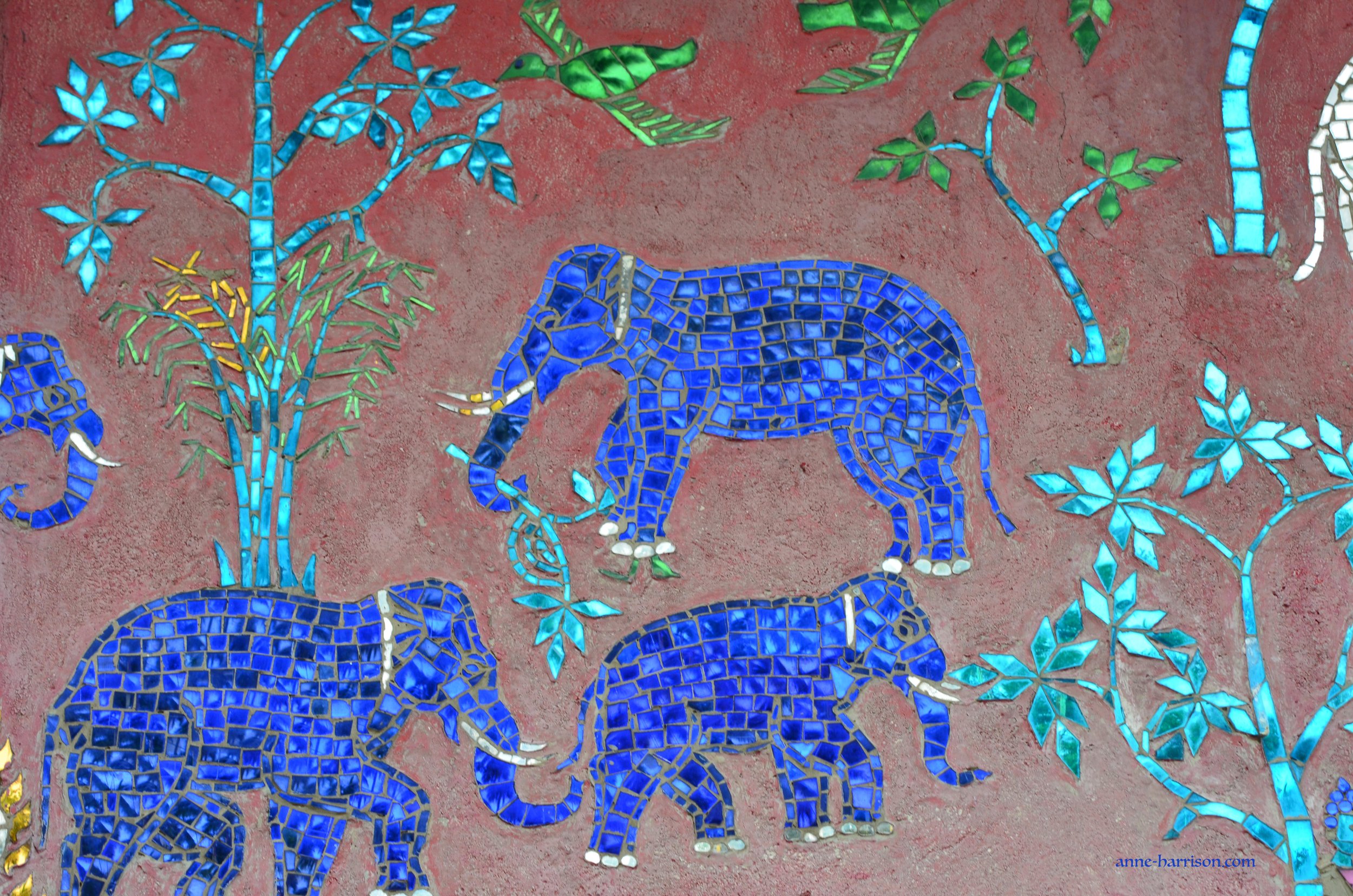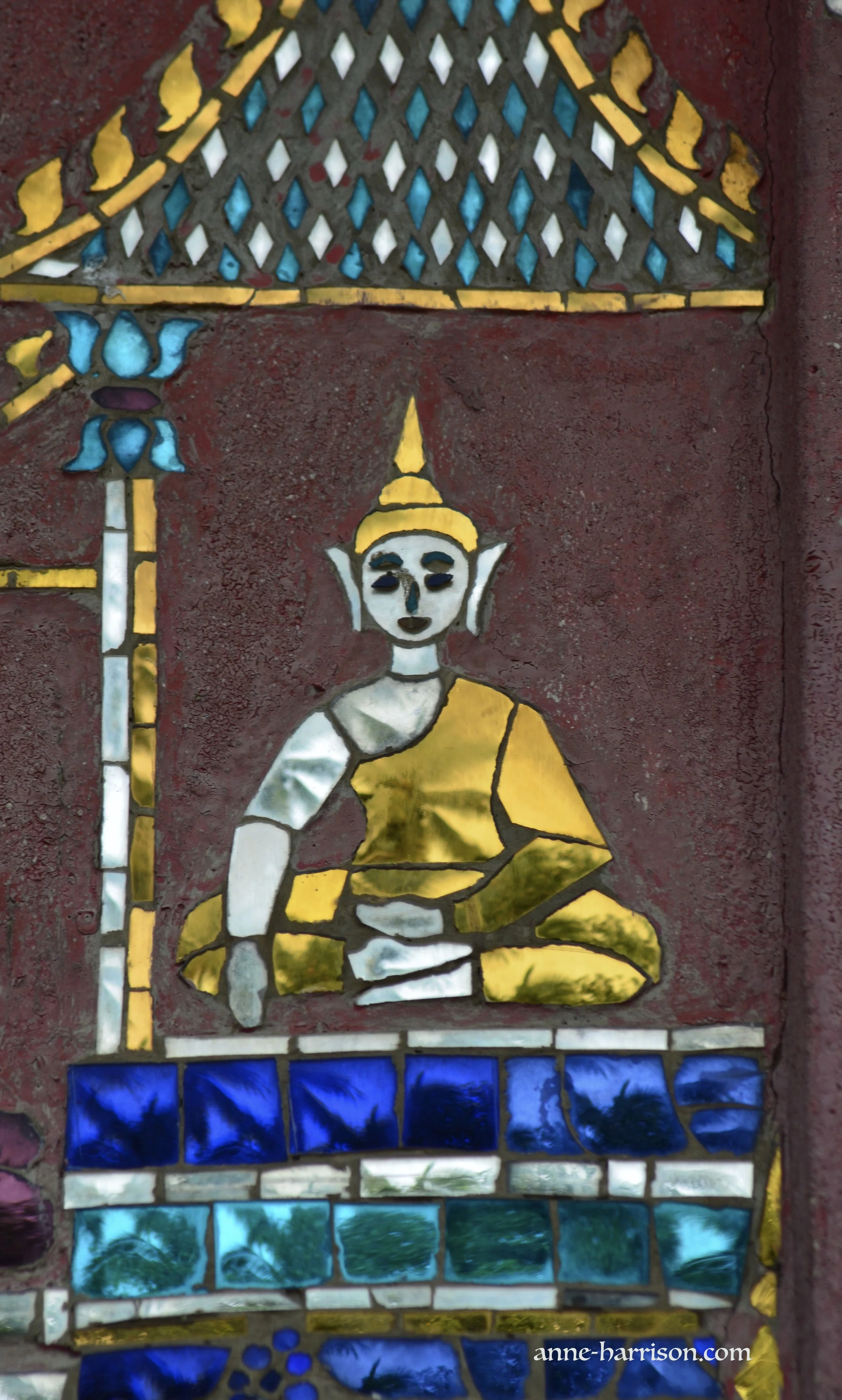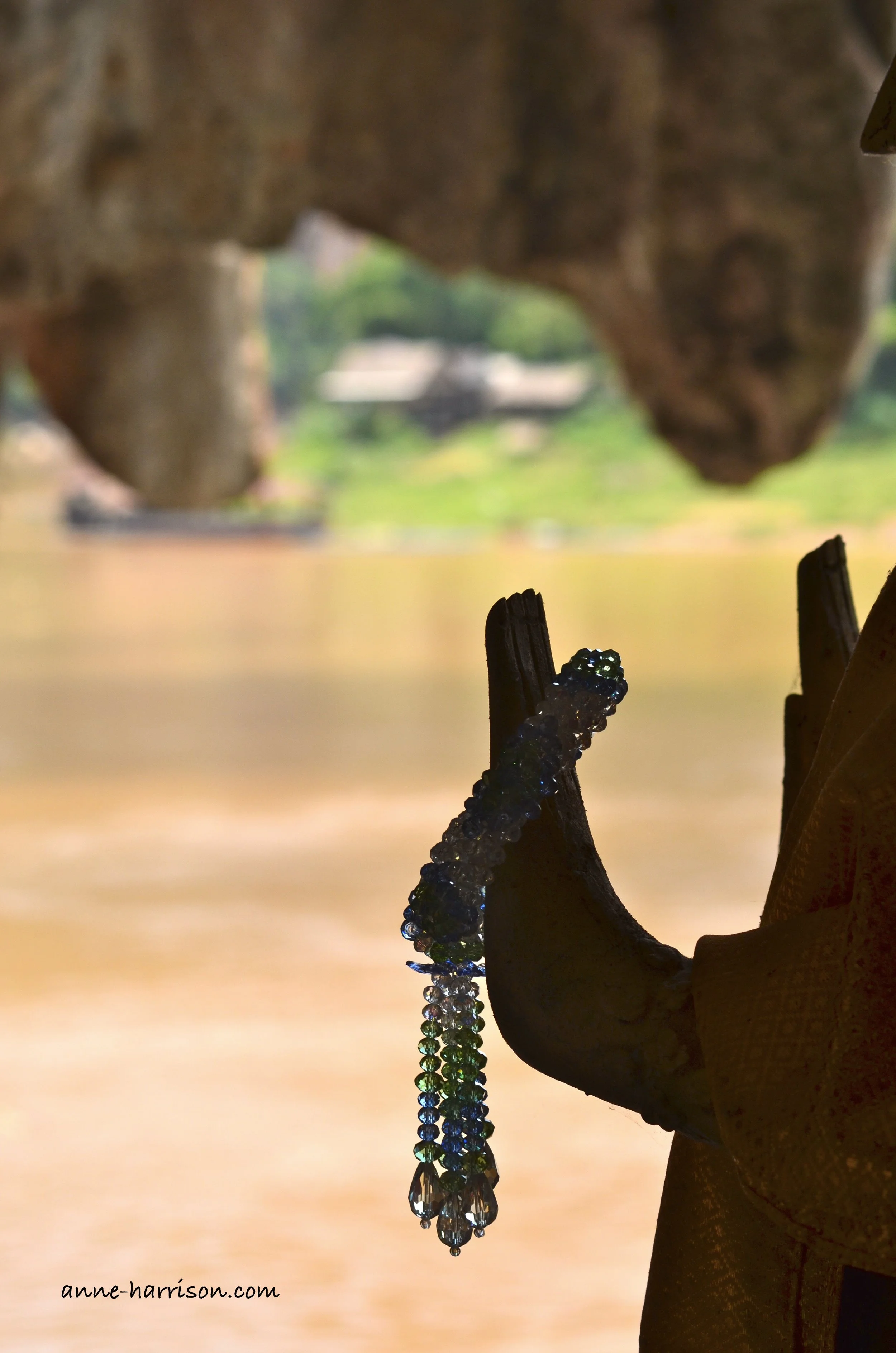The Kingdom Of A Million Elephants And The White Parasol.
Three of the one million elephants © A. Harrison
Without warning the rain tumbled from the sky. From the safety of the verandah I watched the fat drops dance across the garden and onto the road. Squeals of laughter filled the air as everyone dashed for cover. In a matter of minutes the streets of Luang Prabang were deserted. Once the tropical rains begin, few venture outside.
It proved a moment of activity in an otherwise sleepy town. I learnt this at the airport, which was new and bright and shiny. Resplendent in traditional Lao style, the multi-tiered roofs reach to the ground, while the so faa, or roof finials, stretch to the sky. From the plane the gold decorations sparkled amongst the verdant forest. Heat and humidity engulfed me as I stepped onto the tarmac, yet unlike many a tropical city, the air smelled sweet, and clean.
Five minutes from the airport the four-lane highway came to an abrupt end, blocked by a house standing where the road should be. A water buffalo looked on placidly as our minivan was forced to detour along a dirt track, before continuing along the original bumpy road into town.
Such is Luang Prabang.
Despite the influx of tourists rushing Laos into the 21st century, life here still continues at a walking pace. There are no traffic lights, only a few motorcycles and even fewer cars — after the chaos of Saigon, it proved an oasis of quiet, with not a horn to be heard. Outside my hotel window fairy lights hung in the trees, slowly coming to life as the afternoon light faded.
The Mekong and Nam Khan rivers arch around either side of the town, colliding at a finger of land below my hotel. With the wet season just beginning, the waters still ran low. Impossibly steep stairs lead down the banks, indicating just how quickly the rivers rise once the rains start to flow in earnest. Last season a few bridges had washed away, yet to be replaced, and the town itself has on occasion been flooded.
I fell asleep to the sound of rain. When I woke next morning it was dry and already 32º C — and humid. I’d risen with the sun to watch Tak Bat, or the giving of the alms. The faint sound of drums filled the air as the monks walked silently through the streets in an endless procession of saffron.
Men and women sat quietly by the side of the road, offering each monk some sticky rice as they passed. All is done in silence. Many had been up since before dawn, cooking by the side of the road on small burners.
I watched as a handful of monks headed down the stairs and into their waiting long-boat, so crossing the river back to their wat. I could just make out the golden tops of the temple peeping through the forest on the other bank. Even this early in the season the current was so strong the boat headed quite a distance up-stream before heading to the other side, timed to land perfectly at a small jetty.
Later that morning, when an impossible heat had spread over the day, I followed the monks down those stairs and into my own long-tail boat. A cool breeze washed over me as we headed upriver past banks of green. The few houses disappeared until all I could see was a wall of green, with the occasional gold or red of a wat peeping through the canopy. The occasional boat lay pulled up to the bank, tied to a bit of bamboo stuck into the mud. In other places water buffalo stood amongst the undergrowth, while half-naked kids sat on their backs or splashed around them in the water.
The Mekong became narrower the further upstream we headed. Just drifting and watching the world go by proved incredibly peaceful after all the stress of travel. Little wonder, really, that in 1353 the exiled prince Fa Ngum established the first Lao kingdom here, calling it Lan Xang Hom Khao — The Kingdom Of A Million Elephants And The White Parasol.
Slowly the landscaped changed as limestone cliffs emerged from the waters. Many of them have caves, formed as the waters eat away the soft stone. Near where the Nam Ou River joins the Mekong are the Pak Ou Caves. The lower cave (Tham Ting) is easily reached, but the upper Tham Theung is a steep climb away, into darkness. Both are filled with Buddhas of all shapes, sizes and states of (dis)repair. Most are retired here when temples lack room for newer offerings, or if they are too damaged for display — wooden statues being easy prey to termites, incense burns and missing digits.
Standing in the darkness at the back of Tham Theung, looking across a sea of buddha silhouettes to the river below, is a surreal experience. The statues are of all sizes, and in various displays from meditation, peace, teaching poses to the reclining Nirvana. Many are covered with dust and cobwebs, but they are still revered. In the Lao New Year, villagers come by boat to bathe the thousands of buddhas for merit.
Once the Royal capital of Laos, Luang Prabang remains the intellectual and cultural capital of Laos. Although the country is under Communist rule, it is Buddhism which holds the society together. Everywhere there are statues of the Buddha, and the monks in their robes of orange and saffron remain the enduring image of Luang Prabang, and the statues of the caves a reminder of the depth of the culture.
An idyllic life © A. Harrison
Enjoy my writing? Please subscribe here to follow my blog. Or perhaps you’d like to buy me a coffee? (Or a pony?)
If you like my photos please click either here or on the link in my header to buy (or simply browse) my photos. Or else, please click here to buy either my poetry or novel ebooks. I even have a YouTube channel. Thank you!
Plus, this post may contain affiliate links, from which I (potentially) earn a small commission.
Some of my travel journals and notebooks for sale (0n Amazon - please click on image):













